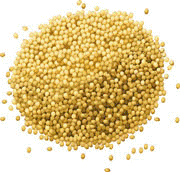International Sorghum and Millet Collaborative Research Support Program (INTSORMIL CRSP)

INTSORMIL Impacts and Bulletins
Date of this Version
2002
Document Type
Article
Citation
2002 INTSORMIL
Abstract
The global community confronts an enonnous task of stimulating economic growth in rural areas where 75% of the very poor (90% in Africa) currently live and ensuring the nutritional security of a world popUlation that is growing in size and evolving in consumption patterns without intensifying environmental degradation, social security, or adverse consequences for human health. This challenge is not only great but it is also urgent. Today, access to food, sufficient, safe, and nutritious food, is the primary problem for nearly 800 million chronically undernourished people. Unless we act now, the next few decades will almost certainly find us unable to produce agricultural products sufficient to meet the demands of growing populations and changing diets. The majority of poor live in rural areas in developing countries and agricultural and food systems development is vital to economic growth; improving environmental quality; strengthening nutrition, health and child survival; improving the status of women; and promoting democratization.
Over the next 50 years, the global population will increase to 8-10 billion, requiring advances in scientific knowledge across a broad range of agricultural endeavors, i.e., developing more productive food and commodity cultivars, improving nutritional quality of crop and livestock products, reducing food and commodity yield losses due to pests and diseases, ensuring healthy livestock, developing sustainable and responsible fisheries and aquaculture practices, optimizing the use of forests, managing water more efficiently, protecting and improving land productivity, and conserving and managing genetic diversity.

